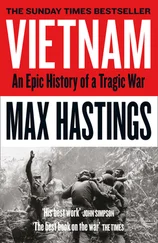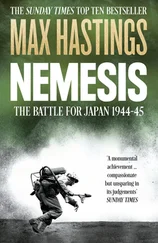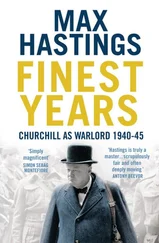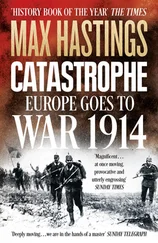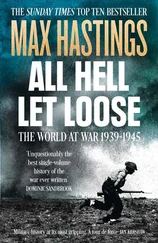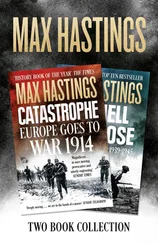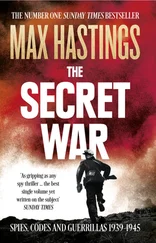Gen. Creighton Abrams. (Bettmann/Getty Images)
A bonze immolates himself on a Saigon street in 1965. (Malcolm Brown/AP/REX/Shutterstock)
South Vietnamese police chief Nguyen Ngoc Loan executes a Vietcong prisoner during Tet 1968. (Eddie Adams/AP/Shutterstock)
Children flee a 1972 napalm strike. (Nick Ut/AP/Shutterstock)
New York Times correspondent Harrison Salisbury with Pham Van Dong, 1966. (Black and White Photograph of Harrison Salisbury and Pham Van Dong, Hanoi, 1966–67. MS#1509, Box 210, Folder 23, Harrison E. Salisbury Papers, Rare Book & Manuscript Library, Columbia University in the City of New York )
North Vietnamese salvage wreckage from a downed US aircraft. (© Doan Cong Tinh/Another Vietnam)
Dean Rusk, John F. Kennedy and Robert McNamara. (Bill Allen/AP/REX/Shutterstock)
Lyndon Johnson harangues journalists, including the author, in the White House cabinet room, January 1968. (Author’s collection)
Henry Kissinger, Nguyen Cao Ky, Ellsworth Bunker, Nguyen Van Thieu and Richard Nixon, 1969. (VA004679, Douglas Pike Photograph Collection, The Vietnam Center and Archive, Texas Tech University)
Bill Weise after being wounded at Daido, May 1968. (Courtesy of William Weise)
Marines attack at Daido. (Courtesy of William Weise)
Jim Livingston. (Courtesy of James E. Livingston)
Staged shot of North Vietnamese troops. (© Hoang Mai/Another Vietnam)
Ho Chi Minh and Le Duan. (© Marc Riboud/Magnum Photos)
Frank Snepp. (Courtesy of Frank Snepp)
Catherine Anne Warnes.
Gen. Van Tien Dung. (AP Photo/Vietnam News Agency/REX/Shutterstock)
Doug Ramsey at his 1973 release after seven years in Vietcong hands. (Courtesy of Doug Ramsey)
Fugitives during the April 1975 collapse of the South Vietnamese army. (Anonymous/AP/REX/Shutterstock)
ARVN defenders of Saigon, 1975. (Bettmann/Getty Images)
North Vietnamese troops approach Saigon. (Hervé GLOAGUEN/Getty Images)
ARVN captives attend a reindoctrination session. (© Marc Riboud/Magnum Photos)
Boat people. (Courtesy National Archives, photo no. 428-N-1175389)
Every effort has been made to trace copyright holders and to obtain their permission for the use of copyright material. The publisher apologises for any errors or omissions in the above list and would be grateful if notified of any corrections that should be incorporated in future editions of this book.
French Indochina
Dienbienphu, 1954
Partitioned Vietnam
South Vietnam’s provinces and main towns
The Ho Chi Minh Trail
The Tet offensive, 1968
Hue
Daido, 30 April–2 May 1968
Operation Linebacker, 1972
January 1973: rival areas of control
The 1975 North Vietnamese offensive: main thrusts
‘Asia will have a long-deferred revenge on her arrogant younger sister’
Dean Inge, 1928
‘Every military fact is also a social and political fact’
Antonio Gramsci
‘Contains mature content strong language and graphic violence: Viewer discretion is advised’
Screen warning introducing the 2017 PBS Burns-Novick series The Vietnam War

The struggle for Vietnam, a poor South-East Asian country the size of California, comprising mountains, jungles and paddies which enchant twenty-first-century tourists but were uncongenial to twentieth-century Western warriors, lasted three decades and cost between two and three million lives. In the eyes of the world, and even those of the communists’ Chinese and Soviet armourers, for the first twenty years it was a marginal affair. During its last phase, however, the war seized the imagination, roused the dismay and indeed revulsion of hundreds of millions of Western people, while destroying one US president and contributing to the downfall of a second. In the wave of youthful protest against authority which swept many countries in the 1960s, rejection of old sexual morality and an enthusiasm for the joys of marijuana and LSD became conflated with lunges against capitalism and imperialism, of which Vietnam appeared an exceptionally ugly manifestation. Moreover, many older Americans who lacked sympathy for any of those causes came to oppose the war because it was revealed as the fount of systematic deceits by their own government, and also seemed doomed to fail.
The 1975 fall of Saigon represented a humiliation for the planet’s most powerful nation: peasant revolutionaries had prevailed over American will, wealth and hardware. The silhouetted stairway up which on the evening of 29 April fugitives ascended to a helicopter, as if towards Calvary, secured a place among the symbolic images of that era. Vietnam exercised greater cultural influence upon its times than has any other conflict since 1945.
The merits of rival causes are never absolute. Even in the Second World War, the Western allied struggle against fascism was compromised by its reliance upon the tyranny of Stalin to pay most of the blood price for destroying the tyranny of Hitler. Only simpletons of the political right and left dare to suggest that in Vietnam either side possessed a monopoly of virtue. The authors of all the authoritative works about the conflict are American or French. More than a few of the former write as if it was their own nation’s story. Yet this was predominantly an Asian tragedy, upon which a US nightmare was overlaid: around forty Vietnamese perished for every American.
Although my narrative is chronological, I have not attempted to chronicle or even mention every action, but instead to capture the nature of Vietnam’s experience through three decades. As in all my books, while relating the political and strategic tale I also try to answer the question: ‘What was the war like ?’ – for Northern sappers, Mekong delta peasants, Huey pilots from Peoria, grunts from Sioux Falls, air defence advisers from Leningrad, Chinese railway workers, bar girls in Saigon.
I was born in 1945. As a youthful correspondent, I lived for almost two years in America, and later repeatedly visited Indochina. My understanding was so meagre, my perceptions so callow, that in the text that follows I shall not allude to personal experiences, instead summarising them here. In 1967–68 I travelled widely in the US, first on a journalistic study fellowship and latterly as a reporter during the presidential election campaign. I had brief encounters with many of the major players, including Robert Kennedy, Richard Nixon, Eugene McCarthy, Barry Goldwater, Hubert Humphrey, Ronald Reagan … and Harrison Salisbury, Norman Mailer, Allen Ginsberg, Joan Baez.
In January 1968, I was among a group of foreign journalists who visited the White House. Seated in the cabinet room, we were harangued for forty minutes by President Lyndon Johnson about his commitment to Vietnam, weeks before he stunned the American people by announcing that he would not run for re-election. That morning his personality seemed no less formidable for being close to the caricature. ‘Some of you like blondes, some of you like redheads, and some of you maybe don’t like women at all,’ he declared in that deadweight drawl, gesticulating constantly to emphasise his points and making broad pencil strokes on a notepad before him. ‘I’m here to tell you what kind I like. I’m prepared to meet Ho Chi Minh any time in a nice hotel with nice food and we can sit down and talk to settle this thing.’
Читать дальше



